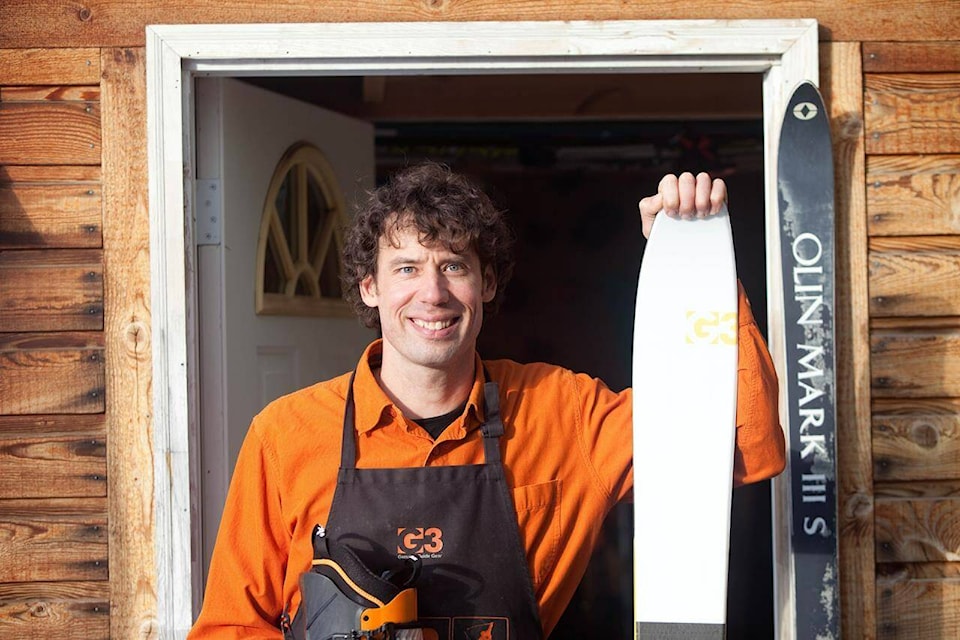From Revelstoke to Fernie, Golden to Kimberley, the communities that make up the Kootenays region of southeast B.C. have long been meccas for wilderness lovers.
Now the mountain towns in this rugged area of the province are seeking to establish themselves as a destination for entrepreneurs, designers and innovators as well.
From ski and bike manufacturers to makers of boats and gluten-free energy bars to fashion designers specializing in outdoor apparel for pregnant and postpartum women, small businesses that create gear for all types of outdoor recreation activities are blossoming throughout the region.
“We’ll have one or two (new businesses) joining us now every week. It’s massive growth that’s happening now,” said Matt Mosteller, chair of Kimberley-based non-profit group KORE, which describes itself as Canada’s first outdoor craft gear-makers alliance.
KORE — which in October will host what it says will be just the second-ever Canadian conference for the outdoor recreation technology (rec-tech), manufacturing and product design sector — has gained more than 100 small business members across the Kootenays region since launching in 2020, Mosteller said.
“In the beginning, it was people who were already here, but now we’re finding people are moving here just to make gear.”
The Kootenays region of southeast B.C. has a hardscrabble history, first settled by loggers, miners and railway workers. Coal mines and sawmills still dot the landscape, with natural resource extraction still at the core of the area’s economy.
But the region has also long been one of Canada’s top destinations for outdoor activity, famed for the ski resorts located along the so-called “Powder Highway,” as well as for mountain biking, hiking, fishing, boating and snowmobiling.
Mosteller, who is known by many locals simply as “Powder Matt” because of his love of the slopes, said while the tourism benefits of such activities are well known, not enough has been done to calculate the dollar value of other parts of the so-called “outdoor recreation economy.”
“Outdoor recreation need not involve overnight travel. A mountain bike purchased to ride on close-to-home trails has economic impact, as does the ski boat used to wakeboard at local lakes,” he said.
“We think it is a massively overlooked economic driver for the province of British Columbia.”
One example of the type of company Mosteller is talking about is Dark Horse Innovations. The business specializes in sustainable product development for the outdoor industry and is based in Nelson, B.C. — an eclectic town of 11,000 people nestled in the Selkirk Mountains on the shores of Kootenay Lake.
Founder Cameron Shute, who left an 18-year career with Vancouver-based G3 Genuine Guide Gear to start his new business, said physical proximity to the places products are used is a huge advantage for gear-makers.
“In Nelson, I can leave my house and be skiing within 20 minutes,” Shute said.
“If I’m working on a ski binding project that I’m developing myself, I can go out and test it in the morning and come back and make a change to the design that same day.”
Traditionally, small-town entrepreneurs such as himself would face challenges related to the size of the local labour pool and access to talent, Shute said. But that has changed dramatically in recent years as the work-from-home phenomenon has gained wide acceptance.
“During COVID, it was amazing, people left the cities in massive numbers and moved to places like Nelson, and the demographics are really changing here because of that,” Shute said.
“I think with the ability to move your job, there’s all sorts of businesses that are possible on a different scale than what was possible before.”
In the U.S., the outdoor recreation economy is already a driving force in states such as Washington and Oregon. A recent government report suggested $21.6 billion is spent annually on outdoor recreation in Washington state, and 42 per cent of that total was spent specifically on gear and equipment.
Another U.S. community — Asheville, North Carolina — has reinvented itself from a centre for heavy industry to a hub for outdoor recreation, in part due to the presence of the Outdoor Gear Builders of Western North Carolina, a consortium of more than 80 businesses that produce gear for river paddling, hiking and biking.
In Canada, the concept of outdoor recreation as its own industry, separate from tourism, is still relatively new. But other communities, not just in the Kootenays, are sensing the potential. Squamish, B.C., for example, is seeking to make a name for itself as a centre for high-performance apparel and sporting goods design.
“Tourism is part of the outdoor recreation economy, but the outdoor recreation economy’s a bit broader,” said Ximena Diaz Lopez, project officer for the Outdoor Recreation Council of B.C.
“When it comes to makers and manufacturing, KORE is the first of its kind, at least in B.C., but they’re inspiring similar initiatives in other areas.”
Mosteller said KORE would like someday to see one of North America’s larger, well-established outdoor companies establish a product testing centre or manufacturing facility in the Kootenays, bringing with it a significant number of jobs and further growing the region’s reputation as a “rec-tech” centre.
“Ultimately, we want to gain the clout that the forestry industry has in this province,” he said.
But he added that, in the end, the outdoor recreation economy is less about visitors and more about the people who already call the Kootenays region home.
“It’s a community-first approach,” Mosteller said.
“We have gear-makers that are retirees to stay-at-home moms to everything in between. And, ultimately, they’re all doing it because somewhere in their past they had this incredible connection with the outdoors, and they found their way here.”
Amanda Stephenson, The Canadian Press
